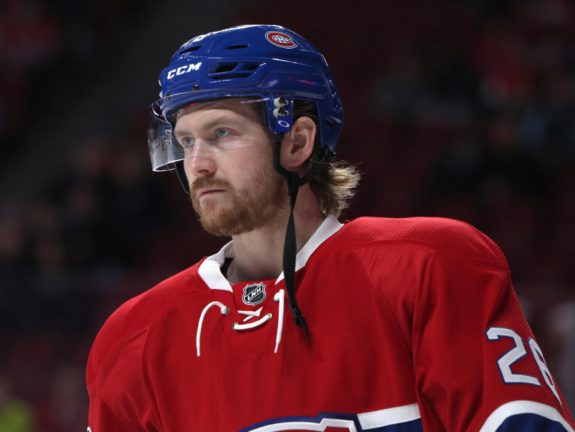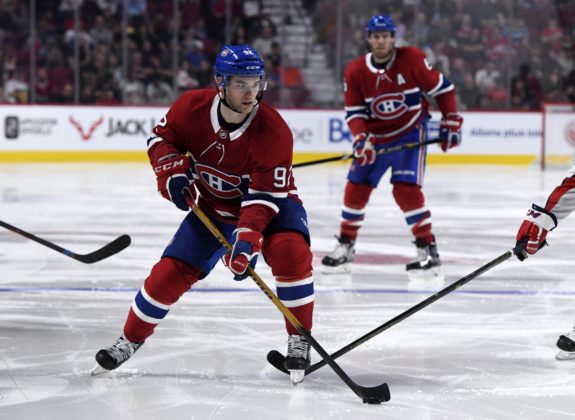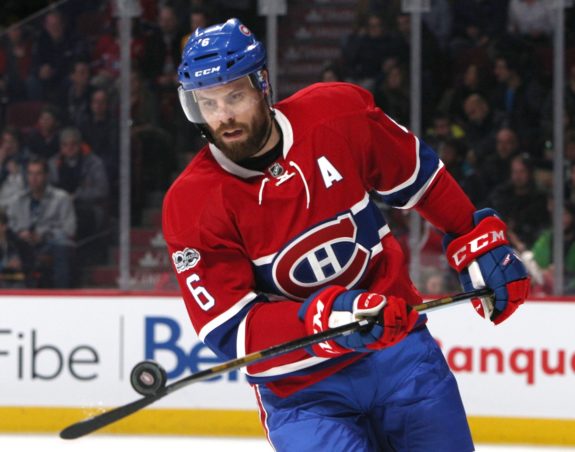In our end of year roundtable, some of us who cover the Montreal Canadiens compiled some key questions for fans and the organization. While there was general agreement that a rebuild in Montreal needs to be considered, we differed in our assessment of that likelihood. The larger problem here is some of the contracts the Canadiens have on the books. Below are the top five most problematic contracts.
By problematic I mean players who are unlikely to perform up to the span of their contracts by focusing on AAV as well as annual salary and signing bonuses (without additional bonuses earned based on performance). Likewise, I have not included contracts that are expiring this year (Tomas Plekanec!). The goal is to try and understand which contracts are will limit the Habs GM’s flexibility over the next few years.
5. Karl Alzner
When the Montreal Canadiens signed 28-year-old Karl Alzner to a five-year, $23.2 million contract, Marc Bergevin showed his plans for the defense for the foreseeable future. Bucking the trend of fast, smart, puck-moving defensive cores, Bergevin selected Alzner described as a “rich man’s Emelin.” Alzner’s contract comes with an AAV of $4.625 million.
So far it looks like the Canadiens overpaid. Perhaps worse is that Bergevin doubled-down on an outdated notion that defensemen should stick to playing in their own end. There is evidence Alzner has been on the decline in terms of offensive production since 2013 and his advanced numbers and diminishing speed limit his utility.
Karl Alzner. 5 years. Dunno, man. Not good. His game is going to have to not slide any from this moment forward or that’s a contract that will provide no reward.
— Brian Wilde (@BWildeMTL) December 10, 2017
The Habs will pay Alzner $6 million this year and next. This is then reduced to $4.6 million, $3 million and then $3.5 million each year until 2022. While Alzner has only 5 assists this year, that is nearly half his point total in 82 games last season. He offers little in the way offensive production and his struggles on defense are becoming impossible to ignore.
4. Jeff Petry
Jeff Petry is being lauded after a good game against the Vancouver Canucks this week. He stepped up just as he did last month to help offset the loss of Shea Weber. According to Pat Hickey, “…his strong entry into the Vancouver zone was the key play on Deslauriers’ first goal and he scored a power-play goal.” Petry has a contract through 2021 with an AAV of $5.5 million.

The problem for Petry (and the Canadiens) has been his inconsistent play. While he is on pace for a second 25-point season in Montreal, Petry is a problematic minus-15. In fact, over his nine-year career, he has only been on the ice for more goals for twice. Despite strong play last year, this year he has been uneven at best.
The Canadiens will pay Petry $6 million this year and $5 million in 2018. This is reduced to $4 million a year through 2021. This year, Petry makes more than Travis Hamonic, T.J. Brodie, Mark Stone, Marco Scandella, and Jake Muzzin. Does that make sense?
3. Jonathan Drouin
It has been a while since Les Habitants have had a legit first line French Canadian hockey player. Jonathan Drouin was traded to the Habs by the Tampa Bay Lightning in June for top defensive prospect Mikhail Sergachev. Drouin signed a six-year contract with an AAV of $5.5 million and he is in Montreal for the foreseeable future.
When Drouin scored 21 goals and 32 assists last year, he was playing on the left wing. This year, early reports that he would get a chance to play at center have proved accurate. While Drouin played center in midget and in the QJMHL, he has struggled at the position in the NHL. Given the team’s scoring problems, it’s reasonable to ask if the responsibilities that come with playing center are preventing him from unleashing his full offensive potential.

Drouin has 5 goals and 13 assists in 29 games this season and makes $6.5 million this year, $5.5 for the next 2 years, and then $4.5 million in 2020-21. The Habs will pay him $5.5 million over the final 2 seasons of his contract. While he may yet prove to be the generational talent that many hope, the rhetoric so far has not been matched by reality.
2. Shea Weber
In his first year with the team, Shea Weber scored 17 goals and 25 assists for 42 points. He was plus-20 and averaged 25:04 minutes of ice time over 78 games. This year, Weber has scored 16 points in 26 games. Despite being a top shut down defenseman, he is at a minus-8. He is 32 and under contract until 2026 at an AAV of $7.85 million.
Many hoped Weber would increase his offensive production this year. Despite being a model stay at home defenseman, he has been a key member of the Habs power play. In 2016, 12 of his 17 goals and 22 of his 42 points came on the man advantage. He has not been nearly as productive this year. More importantly, he appears prone to injury. He’s missed eight games this season and is currently “shut down indefinitely.“

For some, despite his hard shot and defensive prowess, Weber’s skills are already declining. On The Forecheck examined Weber’s play and reported that his basic and advanced stats (point production and Corsi) have declined over the last six years. The Habs will pay Weber $12 million this year and then $6 million in each of the next 4 seasons through 2023. His salary drops to $1 million for the last three years of his contract.
1. Carey Price
This has been a strange year for Carey Price. It started well when he signed an eight-year contract extension. The contract will see Price become the highest paid goaltender in the NHL. He will make $84 million on a deal that expires at the conclusion of the 2025-2026 season, equal to $10.5 million AAV.
After a poor start to the season, strange (and unproven) rumors, and recent concerns about his approach to the media, Montreal seems to be falling out of love with Price. Is the feeling mutual?
Watch this interview with Carey Price after the 3-0 loss to Ottawa on Saturday. Total arrogance. Refuses to answer the questions. Little contemptuous smile. Says he had a good time! If you're a Habs fan, be very worried. https://t.co/tlremYGG05
— Brendan Kelly (@brendanshowbiz) December 18, 2017
This year’s poor play aside, investing so much money in one player is dangerous. It is even more worrying when it is a player with a history of knee injuries, who has not been a playoff performer, and whose best seasons are likely behind him. Comparisons are being made to Henrik Lundqvist who many think is overpaid. Be that as it may, King Henrik outplayed Price last postseason.
Extending Price may haunt the Canadiens. Cap Friendly reports that Carey Price’s Modified No Trade Clause was replaced with a Full No Movement Clause negotiated as part of the 8-year extension signed this year.
Where From Here?
These contracts share one thing: they were all signed by Marc Bergevin. Absent blowing up the team, firing Bergevin, and reimagining the Canadiens, it is unlikely the Habs can move on from most of the contracts above. This is a team built from an elite goaltender out. Bergevin has invested in two defensive defensemen, and one young dynamic forward.
Drouin is not going anywhere. While the Alzner contract looks bad this year, it becomes more affordable next year. Likewise, THW’s own Ryan Szporer argues Weber and Price are here to stay too. Jeff Petry seems out of place. He makes $6 million this year and $5 million next. While that is probably too much to pay, the Habs have enough cap space to overpay if they believe Petry should stay.
In the short term, the Habs are unlikely to move on from Price and Weber who comprise nearly 25% of their salary cap. Both are injury prone and declining assets. Until they spend on a top line center, fans will have to learn to live with mediocrity in Montreal.